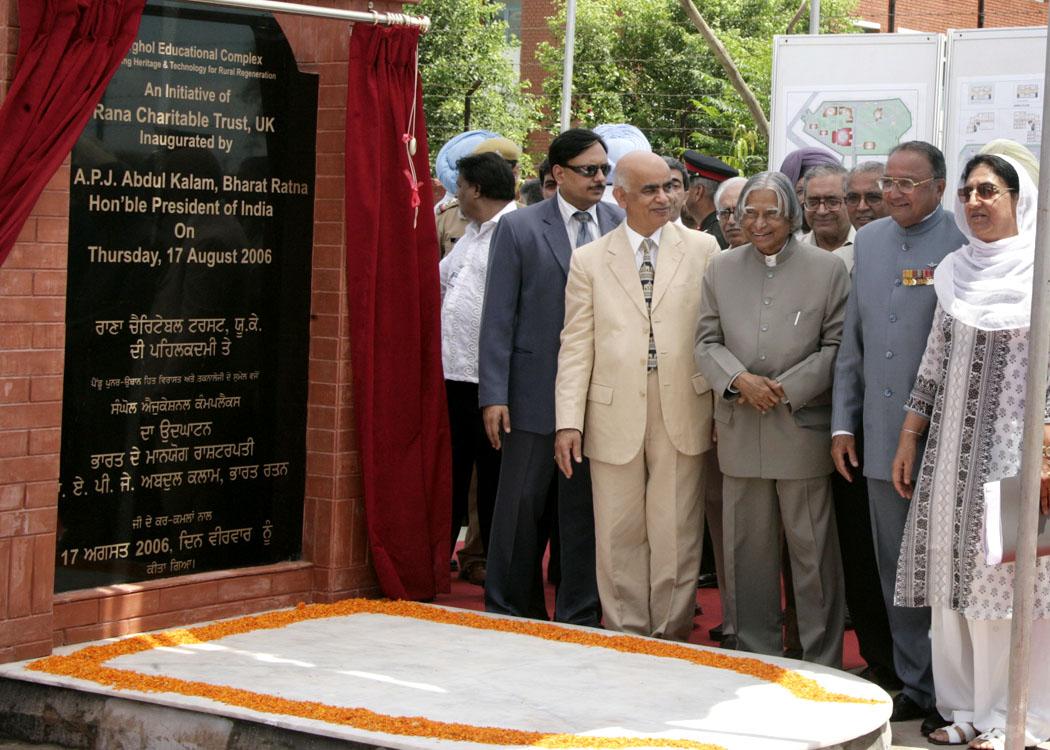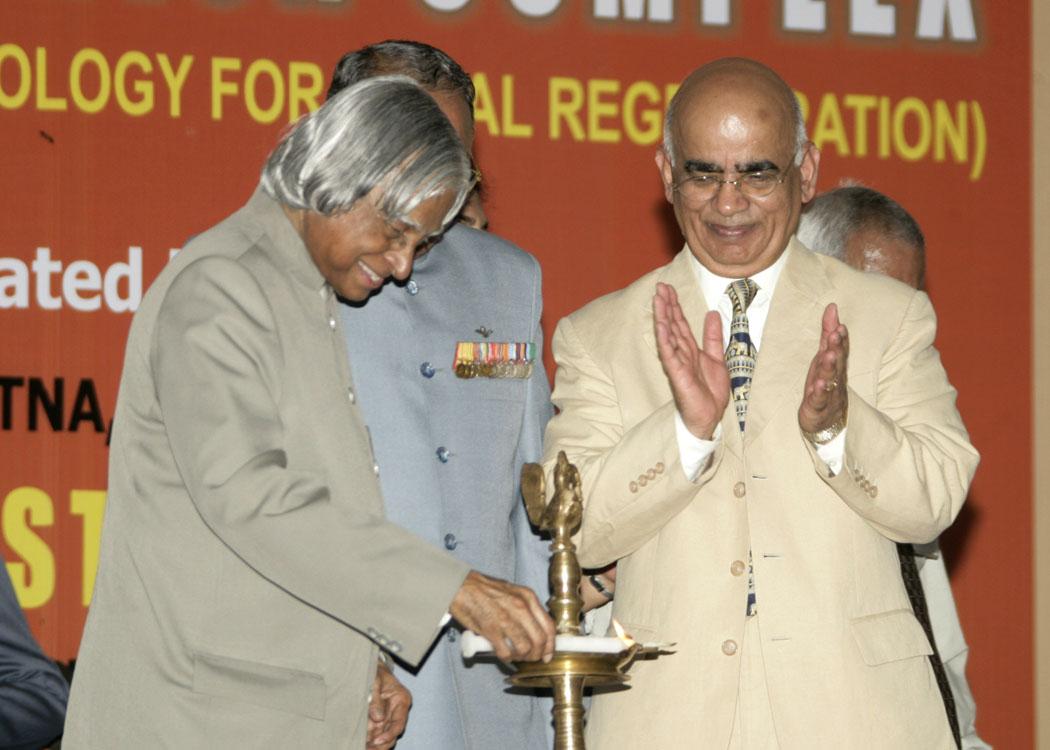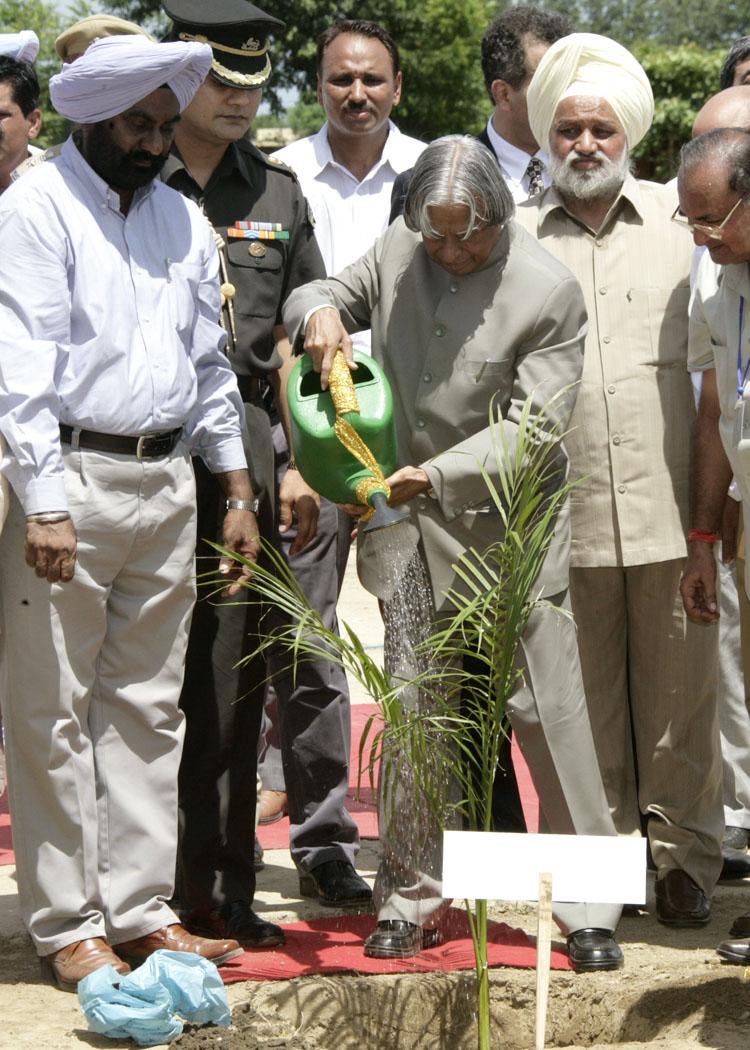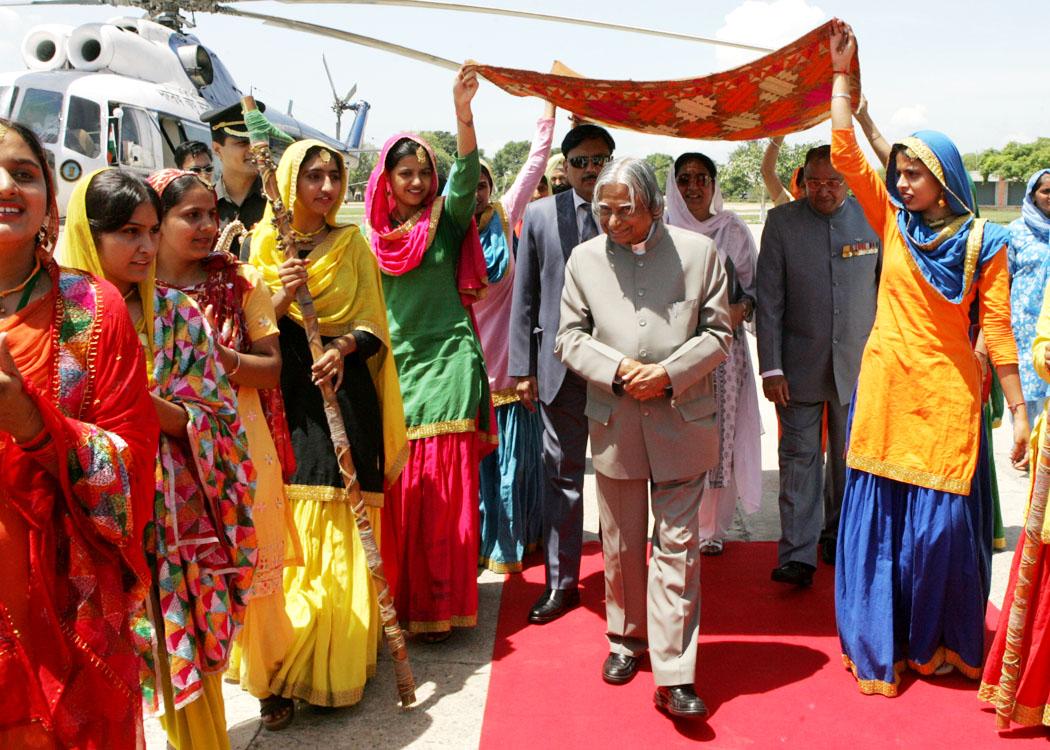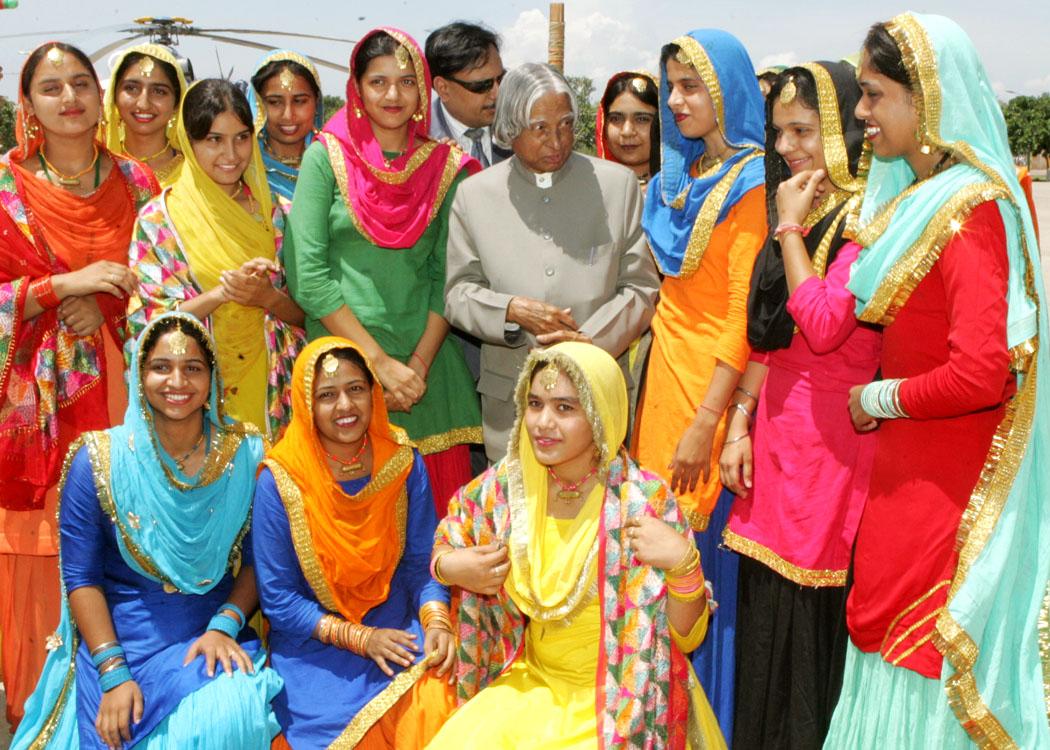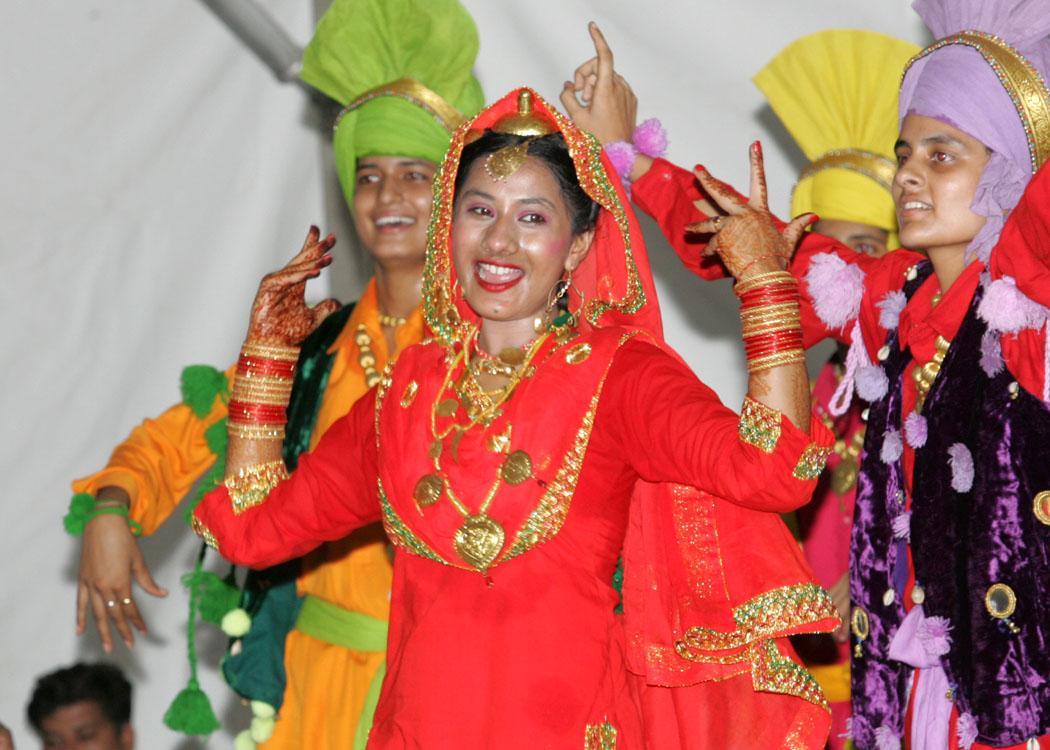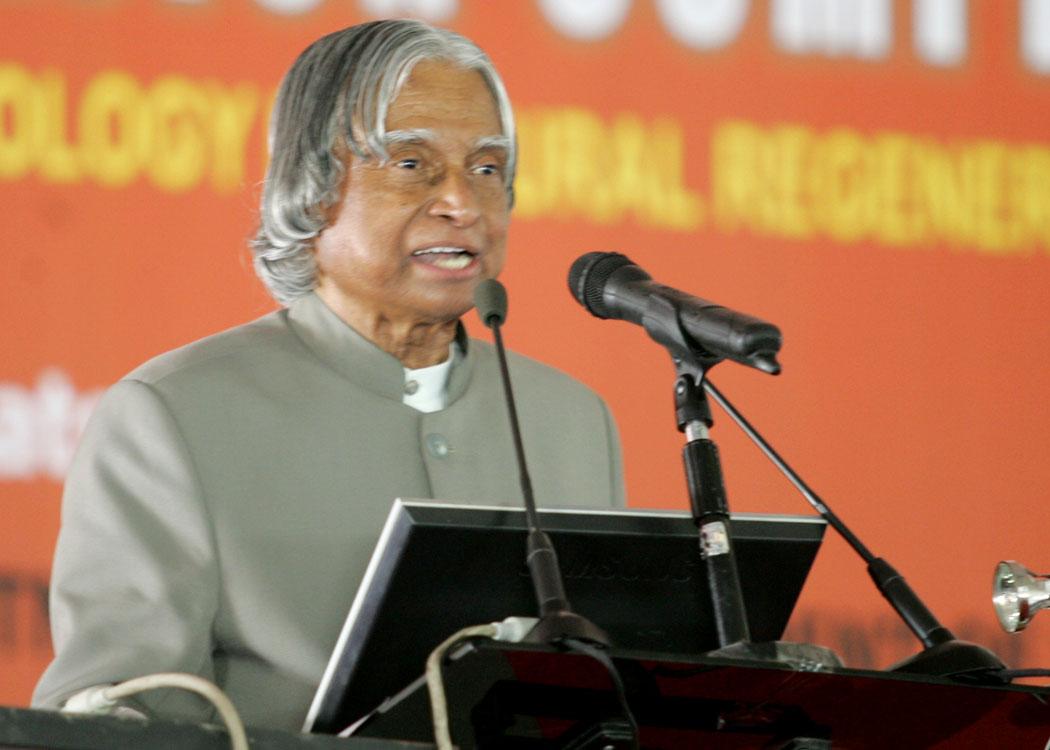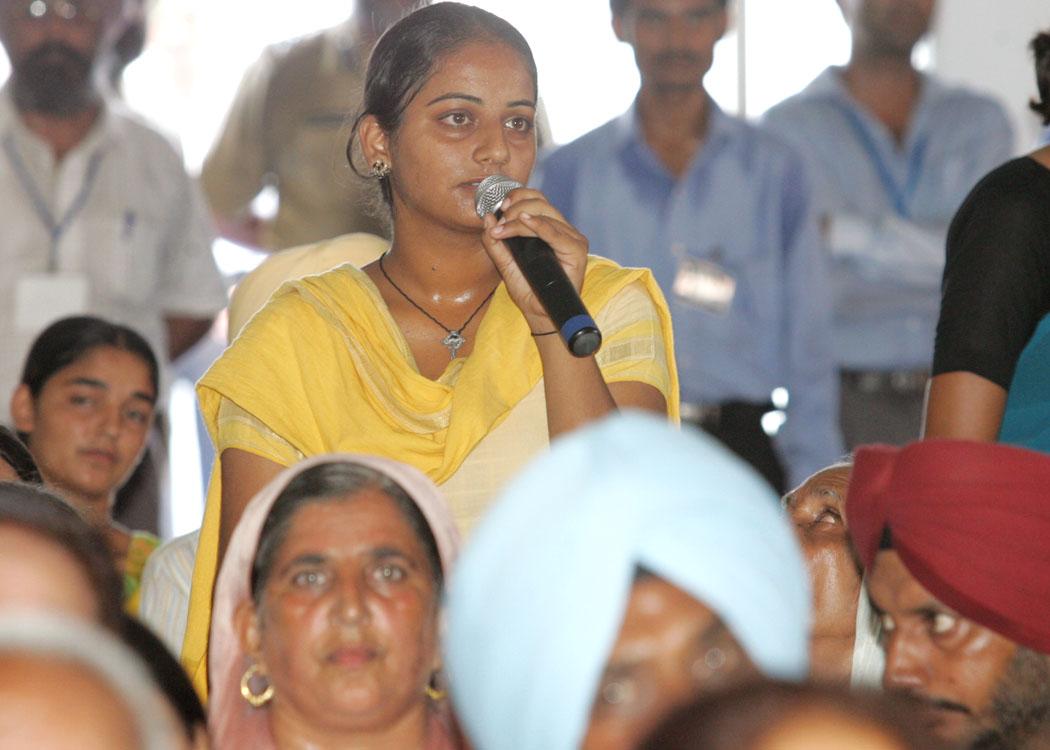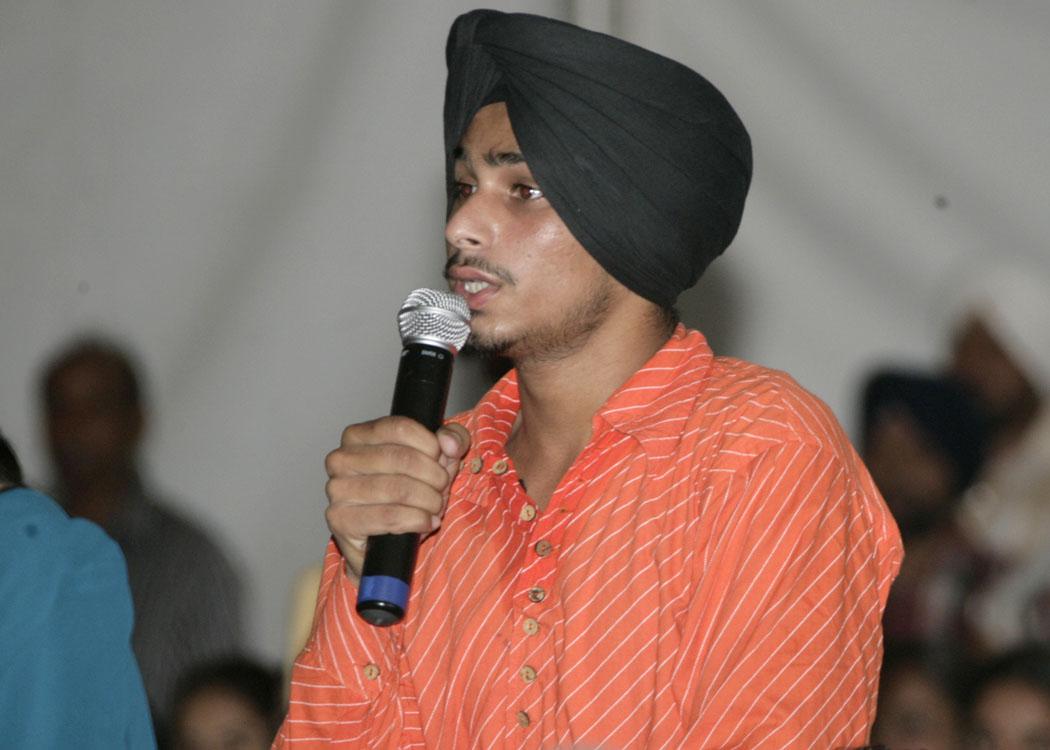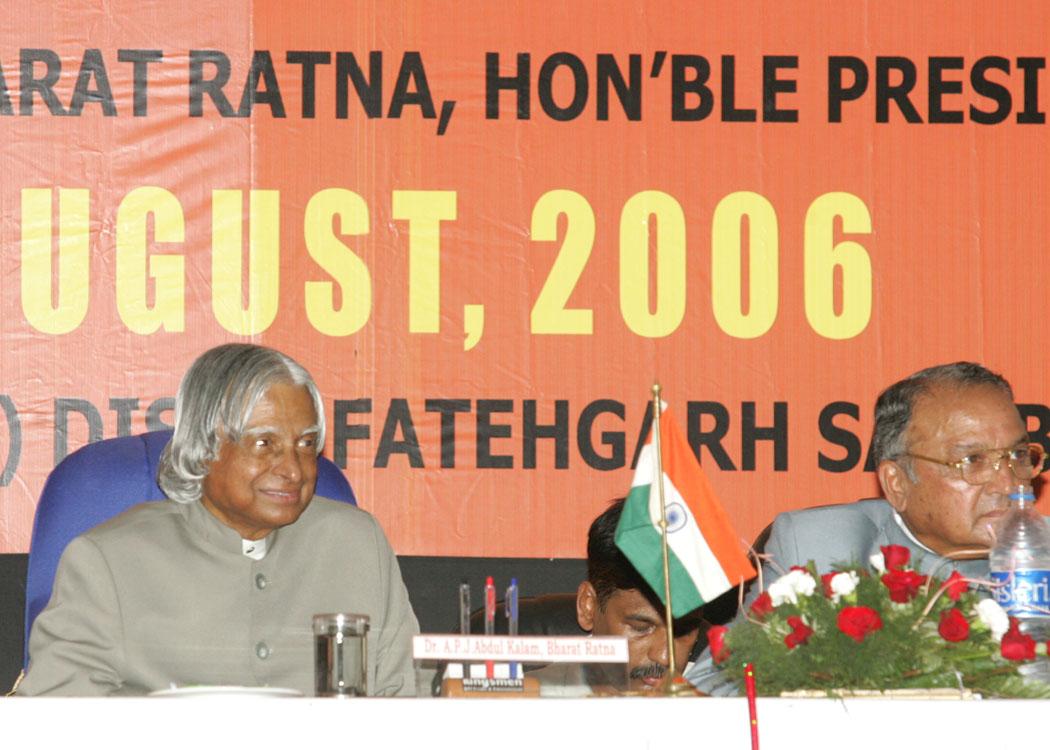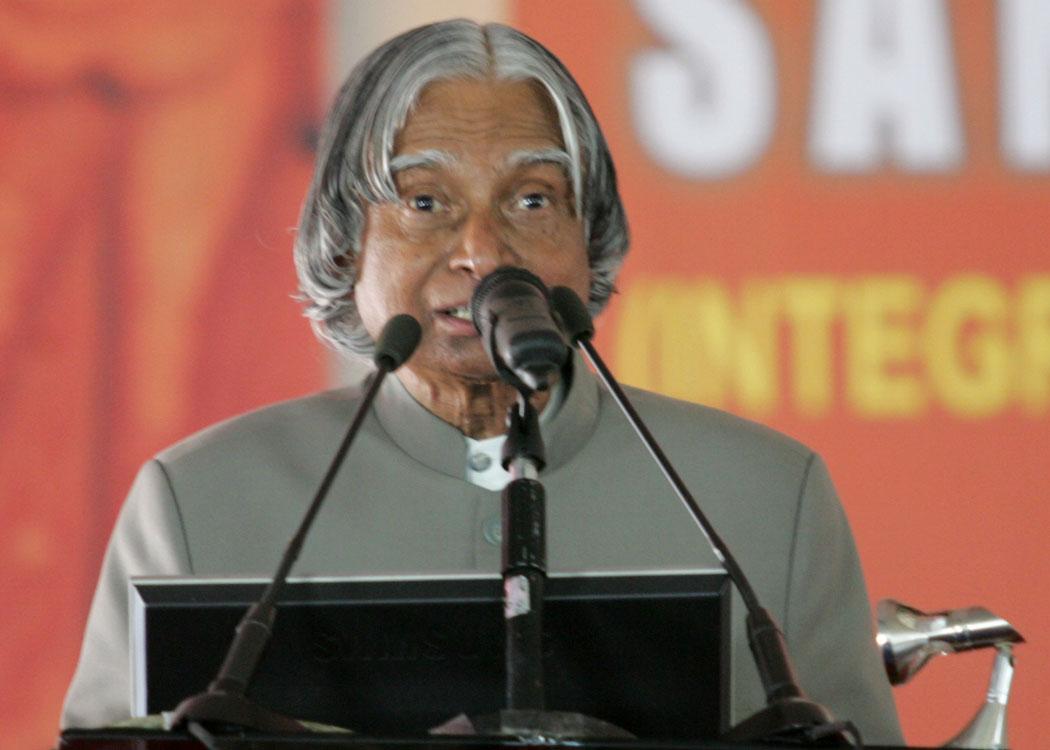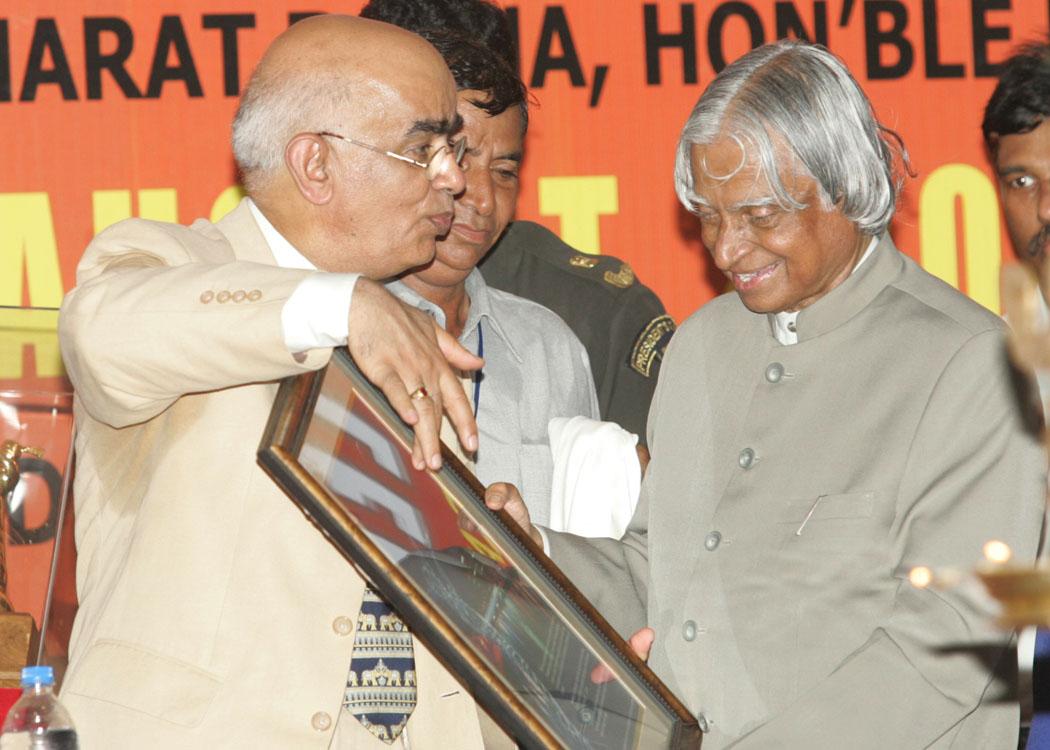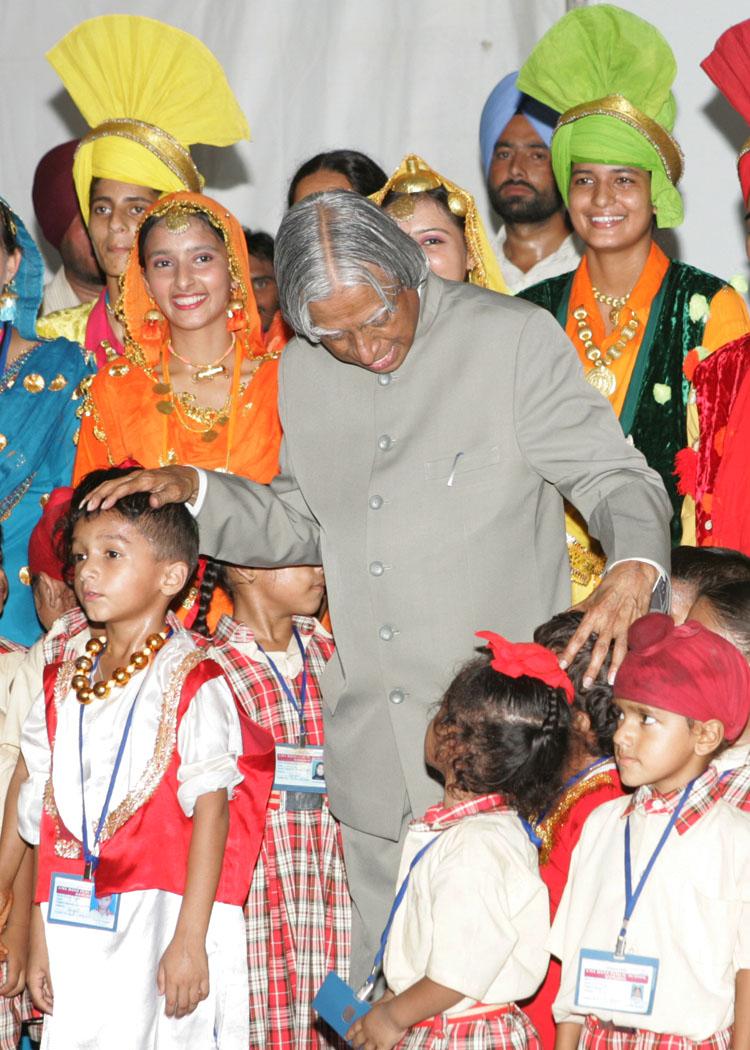Address at the Inauguration of the Sanghol Education Complex
Sanghol : 17-08-2006
Teachers, the best of Minds
I am delighted to participate in the Inauguration of the Sanghol Educational Complex at Sanghol, Fatehgarh Sahib District organized by the Rana Charitable Trust. I greet Lord Rana, and his team members, principals, faculty members, students, parents and other distinguished guests. I congratulate the teachers for continuously generating valuable human resource to our society by shaping the minds of our youth. On this important occasion I would like to talk to you on the topic "Teachers, the best Minds".
Teacher gives a Vision
When I think of my teachers, I am reminded of my childhood days when I was studying in 5th class at the age of 10. I had a teacher, Shri Siva Subramania Iyer. He was one of the very good teachers in our school. All of us loved to attend his class and hear him. One day he was teaching about how the birds fly. He drew a diagram of a bird on the blackboard depicting the wings, tail and the body structure with the head. He explained how the birds create the lift and fly. He also explained to us how they change direction while flying. Nearly for 25 minutes he gave the lecture with various information such as lift, drag, how the birds fly in a formation of 10, 20 or 30. At the end of the class, he wanted to know whether we understood how the birds fly. I said, I did not understand how the birds fly. When I said this, the teacher asked the other students whether they understood or not. Many students said that they also did not understand. He did not get upset by our response since he was a committed teacher and he always encouraged the students asking questions.
Our teacher said that he would take all of us to the sea shore. That evening the whole class was at the sea shore of Rameswaram. We enjoyed the roaring sea waves knocking at the sandy hills in the pleasant evening. Birds were flying with sweet chirping voice. He showed the sea birds in formations of 10 to 20 numbers. We saw the marvelous formations of birds with a purpose and we were all amazed. He showed us the birds and asked us to see that when the birds fly, what they looked like. We saw the wings flapping. He asked us to look at the tail portion with the combination of flapping wings and twisting tail. We noticed closely and found that the birds in that condition flew in the direction they desired. Then he asked us a question, where the engine is and how it is powered. Bird is powered by its own life and the motivation of what it wants. All these things were explained to us within fifteen minutes. We all understood the whole bird dynamics from this practical example. How nice it was? Our teacher was a great teacher; he could give us a theoretical lesson coupled with a live practical example available in nature. This is real teaching. I am sure many of the teachers in schools and colleges will follow this example.
For me, it was not merely an understanding of how a bird flies. The bird?s flight entered into me and created a special feeling. From that evening, I thought that my future study has to be with reference to flight and flight systems. I am saying this because my teacher?s teaching and the event that I witnessed decided my future career. Then one evening after the classes, I asked the teacher, ?Sir, please tell me, how to progress further in learning all about flight.? He patiently explained to me that I should complete 8th class, and then go to high school, and then I should go to engineering college that may lead to education on flight. If I complete all my education with excellence, I might do something connected with flight sciences. This advice and the bird flying exercise given by my teacher, really gave me a goal and a mission for my life. When I went to college, I took Physics. When I went to engineering in Madras Institute of Technology, I took Aeronautical Engineering.
Thus my life was transformed as a rocket engineer, aerospace engineer and technologist. That one incident of my teacher, teaching the lesson, showing the visual live example proved to be a turning point in my life which eventually shaped my profession.
A students' life is influenced by the faculty members and teachers in the school and college environment. Therefore, the schools and colleges must have the best of teachers with ability to, teach and love teaching and build moral qualities. Teachers should become role models. Similarly, the student must be alert to build himself with best of qualities and to get ignited with a vision for himself or herself in future life.
Now I would like to discuss about my college teacher Prof Thothatri Iyengar.
Teacher Puts you ahead
As a young science student, I had an opportunity at St. Joseph?s College to witness a unique scene of divine looking personality walking through the college campus every morning, and teaching Mathematics to various degree courses. Students looked at the personality who was a symbol of our own culture, with awe and respect. When he walked, knowledge radiated all around. The great personality was, Prof Thothatri Iyengar, our teacher. At that time, ?Calculus Srinivasan who was my mathematics teacher, used to talk about Prof Thothatri Iyengar with deep respect. They had an understanding to have an integrated class by Thothatri Iyengar for first year B.Sc. (Hons) and first year B.Sc. (Physics). Thus, I also had the opportunity to attend his classes, particularly on modern algebra, statistics and complex variables. When we were in the B.Sc first year, Calculus Srinivasan used to select top ten students to the Mathematics Club of St. Joseph?s, which was addressed by Prof Thothatri Iyengar. I still remember, in 1952, he gave a lecture on ancient mathematicians and astronomers of India. In that lecture he introduced four great mathematicians and astronomers, which is still ringing in my ears.
He explained, based on his analysis, that Aryabhata was both an astronomer and mathematician, born in 476 AD in Kusuma-pura (now called Patna). He was known to represent a summary of all Maths at that point of time. Just when he was only 23 years old, he wrote his book ARYABHATIYAM in two parts. He covered important areas like arithmetic, algebra (first ever contributor), trigonometry and of course, astronomy. He gave formulae for the areas of a triangle and a circle and attempted to give the volumes of a sphere and a pyramid. He was the first to give value of II (Pi).
My teacher added, next comes to our mind the greatest of all geniuses ever known and acknowledged, and who lived within our present memory, Srinivasa Ramanujan. He lived just for about 33 years (1887-1920), had no practical formal education or means of living. Yet, his inexhaustible spirit and love for his subject made him contribute to treasure house of mathematical research ? some of which are still under serious study and engaging all-available world mathematicians? efforts to establish formal proofs. In fact, it is not an exaggeration to say that it was Hardy who discovered Ramanujan for the world. One of the tributes to Ramanujan says that, ?every Integer is a personal friend of Ramanujan. His works cover vast areas including Prime Numbers, Hyper-geometric Series, Modular Functions, Elliptic Functions, Mock Theta Functions, even magic squares, apart from serious side works on geometry of ellipses and squaring the circle. During the lecture he also talked about other two great Indian mathematicians Brahmagupta who wrote BRAHMA SPHU-TA SIDDHANTA and Bhaskaracharya and his SIDDHANTHA- SIROMANI. These incidents and knowledge became the foundation for my education, learning with hope and value system. Prof Thothatri Iyengar through his teaching had put me a few decades ahead.
My design teacher Prof Satish Dhawan
I would like to share with you another experience with my teacher Prof. Satish Dhawan. First, I worked in Delhi with the Ministry of Defence. Later I joined Defence Science Organization in 1958 at Aeronautical Development Establishment at Bangalore. There with the advice of the Director, I took up the development of Hovercraft. Hovercraft design needed the development of a ducted contra- rotating propeller for creating a smooth flow balancing the torques. I did not know how to design a contra-rotating propeller though I knew how to design a conventional propeller. Some of my friends told me that I can approach Prof. Satish Dhawan of Indian Institute of Science, who was well known for his aeronautical research, for help in designing the ducted contra-rotating propeller.
I took permission from my Director Dr. Mediratta and went to Prof. Satish Dhawan who was sitting in a small room in Indian Institute of Science with lot of books in the background and a blackboard on the wall. Prof. Satish Dhawan asked me what the problem was that I would like to discuss? I explained the problem to Prof. Dhawan about my project work. He told me that it is really a challenging task and he would teach me the design if I attend his classes in IISc between 2.00 p.m. to 3.00 p.m. on all Saturdays for the next Six weeks. He was a visionary teacher. He prepared the schedule for the entire course and wrote it on the black board. He also gave me the reference material and books that I should read, before I start attending the course. I considered, this as a great opportunity and I started attending the discussion and started meeting him regularly. Before commencing each meeting, he would ask critical questions and assess my understanding of the subject. That was for the first time that I realized how a good teacher prepares himself for teaching with meticulous planning and prepares the student for acquisition of knowledge. This process continued for the next six weeks. I got the capability for designing the contra-rotating propeller. Prof. Dhawan told me that I am ready for developing the contra-rotating propeller for a given hovercraft configuration. That was the time I realized that Prof. Satish Dhawan was not only a teacher but also a fantastic development engineer of aeronautical systems.
Later during the critical phases of testing Prof. Dhawan was with me to witness the test and find solutions to the problems. After reaching the smooth test phase, contra-rotating propeller went through 50 hours of continuous testing. Prof. Satish Dhawan witnessed the test himself and congratulated me. That was a great day for me when I saw the contra rotating propeller designed by my team performing to the mission requirement in the hovercraft. However, at that time, I did not realize that Prof. Satish Dhawan would become Chairman, ISRO and that I would get the opportunity to work with him as a Project Director in the development of satellite launch vehicle SLV-3 for injecting the Rohini Satellite into the orbit. Nature has its own way to link the student?s dream and the real life later.
That was the first design in my career which gave me the confidence to design many complex aerospace systems in future. The hovercraft could fly just above the ground level carrying two passengers. I was the first pilot for this hovercraft and I could control and maneuver the vehicle in any direction. Through this project I learnt the techniques of designing and developing the contra-rotating propeller and system engineering the hovercraft. Above all, I learnt that in a project, problems will always crop up; we should not allow problems to be our masters but we should defeat the problems and succeed. Now, I would like to discuss the capacities which are required to be built among the students for enabling them to contribute towards national development.
Capacity Building
The special capacities that are required to be built among the students are research and enquiry, creativity and innovation, use of high technology, entrepreneurial and moral leadership.
Research and enquiry: The 21st century is about the management of all the knowledge and information we have generated and the value addition we bring to it. We must give our students the skills with which they find a way through the sea of knowledge that we have created and continue with life long learning. Today, we have the ability, through technology, to really and truly teach ourselves to become the life-long learners. This is required for sustained economic development.
Creativity and innovation: The management of knowledge in the 21st century is beyond the capacity of a single individual. The amount of information that we have around is overwhelming. The management of knowledge therefore must move out of the realm of the individual and shift into the realm of the networked groups. The students must learn how to manage knowledge collectively. When the information is networked the power and utility of the information grows as square as stated by Metcalfe's law. Information that is static does not grow. In the new digital economy information that is circulated creates innovation and contributes to national wealth.
Capacity to use high technology: Every student in our school and college should learn to know how to use the latest technologies for aiding his or her learning process. Schools and colleges should equip themselves with adequate computing equipment, laboratory equipments, and Internet facilities and provide an environment for the students to enhance their learning ability. In the midst of all the technological innovations and revolutions we cannot think that the role of the teachers will be diminished. In fact the teacher will become even more important and the whole world of education will become teacher assisted and would help in 'tele-porting' the best teacher to every nook and corner of the country and propagate the knowledge.
Entrepreneurship: The aptitude for entrepreneurship should be cultivated right from the beginning and in the university environment. We must teach our students to take calculated risks for the sake of larger gain, but within the ethos of good business. They should also cultivate a disposition to do things right. This capacity will enable them to take up challenging tasks later.
Moral leadership: Moral leadership involves two aspects. First it requires the ability to have compelling and powerful dreams or visions of human betterment. Moral leadership requires a disposition to do the right thing and influence others also to do right things.
If we develop in all our students these five capacities, we will produce ?Autonomous Learner? a self-directed, self controlled, lifelong learner who will have the capacity to both, respect authority and at the same time is capable of questioning authority, in an appropriate manner. The most important part of the education is to imbibe the confidence among the students is the spirit of ?we can do it?.
Conclusion
So far, I have interacted with over one million youth in different parts of our country. I also interacted with nearly 20,000 students in the 14 countries which I visited. My interaction with these children reveal that the aspirations of the young, whether in India or in other nations, are the same: that is to live in a peaceful, prosperous and secure nation. All of them are looking for challenging missions, good role models and leaders who can be their guiding spirit. A combination of knowledge, enthusiasm and hard work of the youth, is a great dynamic force available for the societal transformation. We belong to one society and we should work for the universal prosperity and world peace.
I would like to quote from the great philosopher Dr. S. Radhakrishnan particularly for the benefit of students and teachers - ?The sense of human need is there and the teacher can satisfy it by giving to the youth an idea of the fundamental power and worth of man, his spiritual dignity as man, a supra-national culture and an all embracing humanity.?
I inaugurate the Sanghol Educational Complex and wish the members of this Educational Complex success in their mission of promoting quality education to the youth of this region.
May God bless you.
Now I would like to answer some of the questions.
Meena Kumari, B.A., Sub: Economics, History
1. Sir, you say that India will be a developed nation by 2020; do you feel that present pace of development will lead to that situation?
Ans. Punjab is the granary of India and also well known for small and medium scale industry and entrepreneurship. The way the Pharma industry, small scale industry, ICT, agro-food processing, automobile industry, space are progressing and with the enthusiasm and commitment of our youth we will definitely succeed in transforming India into a developed nation. Also, the percentage of people who are below poverty line is coming down. All this gives me the confidence that India is well poised to become a developed nation well before 2020.
Jaskaran Kaur, B.A.-I., Sub: Political science, History
2. Sir, had you ever imagined when you were a child that one day you would become the President of India?
Ans. My Elementary school teacher inspired me to take aeronautics as my career.
Harvinder Singh, B.A.-I., Sub: Economics, History
3. Sir, how was your experience of flying in Sukhoi?
Ans. Experience in Sukhoi-30 MKI
On 8th June 2006, I flew in a Sukhoi-30 fighter plane to make a sortie on the combat aircraft. Previous night Wing Commander Ajay Rathore gave me lessons on how to fly. He was my friend and teacher who taught me successfully how to pilot the plane as well as handle warfare control of the fighter. It was a dream for me since 1958 when I became an engineer, to fly in a fighter aircraft. After our strapping on, Sukhoi-30 took off and sore to a height of 25,000 feet flying at a speed of over 1200 kms per hour. Wing Commander Rathore allowed me to turn the Sukhoi to the left and then to the right. I experienced 2.5g, of course with a g-suite. I could experience the banking of the Sukhoi to the left and right going up and down before landing. During the sortie I tried to understand various subsystem of the aircraft developed by Indian scientists which have been integrated with this aircraft. I was very happy to see the indigenously built mission computers, radar warning receivers, IFF and display processors in the aircraft. During the sortie, I was shown how to locate the target in the air and on the ground with the help of synthetic aperture radar. The flight lasted for over 36 minutes. I felt the fulfillment of a great aim and long cherished dream of my life. Above all, I realized how our air warriors are engaged in the defence of our national airspace and land.
Kamaljeet Kaur B.A. -II, Sub:- Math, Economics
4. Sir, where do you place India as compared to advanced countries as far as science and technology is concerned?
Ans. We have made substantial progress in space, pharma, information and communication technology, automobile, food processing and atomic energy. This process has to continue and India should take leadership in certain specific area through its core competence. Pardeep Kaur B.A.-I, Sub:- Political Science, History, Computer Applications
5. Sir, students of rural areas are at a disadvantageous position as compared to urban areas and 70 % of the population inhabits rural areas, how can the country progress in such a situation?
Ans. The purpose of initiating Education Complex what I have inaugurated today is to remove the disadvantage faced by the rural children. What is needed is along with the education system, a PURA complex must come here by clustering 20 to 30 villages in Fatehgarh Sahib district. That will enable provisioning of physical connectivity, electronic connectivity along with knowledge connectivity leading to economic connectivity. A PURA complex has come in the country through the initiative of a women engineering college in Vallam, Tamil Nadu.
Lakhvir Kaur B.A.-II, Sub:- Economics, Computer Science
6. Why the character of our national leaders is going down day by day?
Ans. Adichunchanagiri example.

